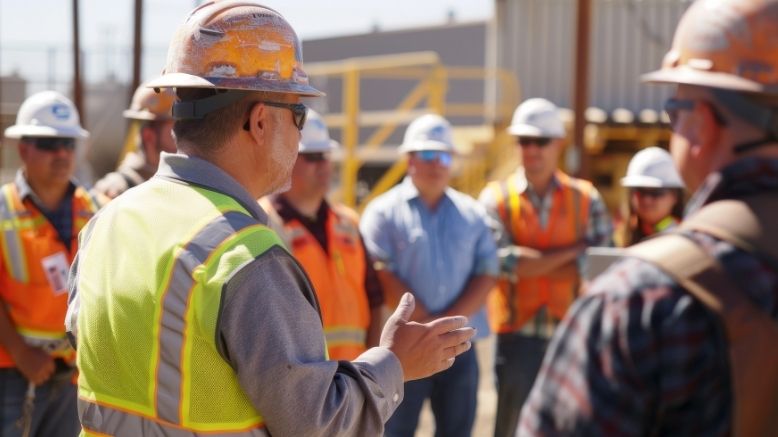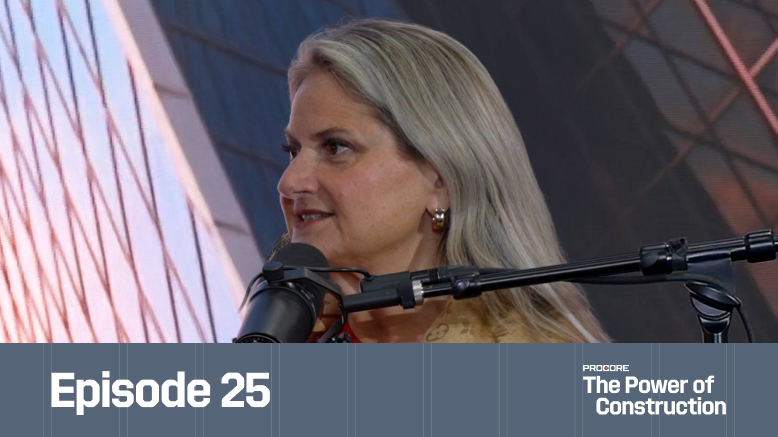— 7 min read
Construction Communication in the Digital Age: Pain Points and Opportunities for GCs


Last Updated Jul 15, 2025

D. Jesse Mase
Principle Operational Excellence Specialist
10 articles
D. Jesse Mase has a wealth of experience spanning architecture, construction, and real estate investment. His passion for the built environment led him to self-employment as a design builder, and later, managing large-scale commercial construction projects at Trehel Corporation. Currently, Jesse leverages his industry insights in his role as Principal Strategic Product Consultant at Procore, streamlining processes and solutions for construction project owners.

Kacie Goff
Contributing Writer
91 articles
Kacie Goff is a construction writer who grew up in a construction family — her dad owned a concrete company. Over the last decade, she’s blended that experience with her writing expertise to create content for the Construction Progress Coalition, Newsweek, CNET, and others. She founded and runs her own agency, Jot Content, from her home in Ventura, California.
Last Updated Jul 15, 2025

Construction professionals report that projects are moving faster than ever before. Demanding schedules aren’t the only thing that introduces speed, though. Information often changes quickly on projects. In fact, some pros argue that the only thing that’s consistent in construction is change.
The problem facing many general contractors (GCs) is aligning teams behind the latest information as quickly as possible. For that, communication is key. While the construction industry is not known as a model space for great communication — in terms of both messaging and medium — there are some best practices and helpful platforms that can help construction pros connect.
Table of contents
Common Drivers of Construction Communication Issues
Communication in construction has historically been challenging due to a few distinct yet interconnected issues.
Language Barriers
It’s never safe to assume that everyone on the project speaks the same language. One report from the American Council on the Teaching of Foreign Languages (ACTFL) found that construction faces the largest gap of any industry between skilled workers and managers who speak the same language.
Generational Barriers
As technology and new ways of working transform the industry, there’s some divide between the old and new school. Older, more experienced construction workers have building expertise honed by years of doing the work. Younger tech-native workers may find traditional processes burdensome, though.
Take a simple phone call as an example. A long-standing superintendent might be used to calling team members and contractors. But in one survey, just 16% of Gen Z and millennial respondents said they thought calls were an effective use of time. This generational divide often makes communication difficult.Logistical Barriers
Projects are anything but static, and a GC might move people around to optimize resources. If someone gets reassigned but another stakeholder isn’t informed, communication can slip through the cracks. Something as simple as not having the right phone number — or the now-reassigned person not redirecting a stakeholder to the new responsible party — leads to communication breakdown.
Interpersonal Barriers
Communication gets stilted when the parties communicating don’t get along. Plus, pride or ego might prevent someone from asking a question in the first place. Good relationships lay a foundation for good communication. The fast-paced, often competitive construction industry doesn’t necessarily hold space for building good interpersonal relationships.
With so many barriers to contend with, some GCs have looked to technology with a sigh of relief. When deployed well, tools and platforms can help to support and streamline communication.
Courses about construction.
For construction.
Unlock your career potential with our free educational courses on Health & Safety, Data in Construction, and more.
How Communication Platforms Help Construction Professionals Connect
Deploying communication platforms can help GCs support strong and accurate information delivery. Having a formalized, tech-backed communication plan in place can help both drive and capture communication of important internal information. Just as importantly, it provides a way to streamline communication with external stakeholders, including owners, designers, engineers, and specialty contractors.
Say, for example, that the GC drives all communication through their email solution or project management software. Having a communication record in the GC’s system of choice delivers some benefits, particularly when that system is feature-rich.
A strong communication platform can give GCs the following benefits.
Proof of Communication
When disputes arise on projects, knowing who said what when matters. With a formalized communication platform, GCs get a way to automatically generate the audit trail they need.
Wider Communication Visibility
When conversations are captured so that the broader team can access them, they become a source of information. Someone might be able to find the answer they need in a recorded communication instead of having to bother the stakeholder with it again.
Translation Tools
Some communication platforms offer built-in translation tools. These can boost productivity and minimize frustrations when working with a multilingual team.
Automatic Push Notifications
A strong platform can take some of the manual labor out of communication with automated push notifications. If a designer still needs to review a submittal, for example, the platform can automatically send them a reminder.
Dictation Tools
Construction professionals are generally busy. Talk-to-text options can help them capture communications on the go.
Real-time Communication of Changes
Sophisticated communication platforms pull in project information and make it easier to share. If someone marks up a drawing in the office and can instantaneously share it with the field, for example, the field team can then move forward without having to wait around for clarity.
Video Meetings
With video conferencing, GCs can tap into the best engineers, architects, and constructors for their project, regardless of those individuals’ locations. Video meetings also give the GC a way to sync with the owner more easily without requiring anyone to get in a vehicle and lose time to travel.
Thanks to communication platforms, there’s a lot less getting in the work truck and traveling to talk to someone face-to-face. Conversations and information sharing can happen digitally and instantaneously. What’s more, when those communications get captured in the platform, it helps manage the risk for the GC firm.
Platforms Alone Can’t Solve Interpersonal Problems
Communication platforms help streamline communication, but that assumes there was already some sort of flow to centralize and smooth. If the interpersonal situation is bad to start with, tech could actually hurt.
People tend to be braver about sharing frustrations and pointing fingers when they’re behind a keyboard. Plus, the ability to communicate digitally at any time, from anywhere can blur the lines of work-life boundaries.
GCs shouldn’t assume that implementing a communication platform will solve for company culture issues. That’s true whether they’re dealing with internal tension or a bad relationship with an external stakeholder. And the GC certainly shouldn’t expect that team members will adopt a technology that could make their lives harder.
As a result, before turning to technology, decision-makers at GC firms should identify their specific communication challenges. Some can be well solved by a communication platform. If those problems are soft skills-driven, though, investing in developing those skills might yield a better return when paying for a platform.
Best Practices for Integrating Communication Platforms in Construction
General contractors who want to deploy a communication platform or formalize the use of one they already have in place have a tall task ahead of them. They should expect some resistance to change.
It makes sense, then, to map their current state of communication and their ideal end state. If everyone is using a mix of in-person syncs, calls, texts, and emails now, shifting overnight to a communication platform probably isn’t realistic.
The GC should determine the right medium for the message and only implement requirements when they’ll yield a good return for the parties involved. If someone needs to notify a subcontractor that they’re out of contract compliance, for example, having a formal process in the communication platform makes sense. Identify the areas where an audit trail is most important and start there. Have rules in place to make sure significant information gets captured.
Also, ask the team about their preferences. Building on what’s already in use is easier than starting from scratch. So is implementing change when teams can see how it will benefit them. Say, for example, that sharing reality capture imagery is difficult. Finding a way to support that effort with the communication platform can drive team-wide adoption.
Right now, the construction industry's relatively slow tech adoption means that it might not make sense to require the use of a communication platform across the board. Instead, identify areas where it can serve the team in measurable ways and start there.
This gets people more comfortable with the technology and the change management required to learn it — and helps them see how well-deployed solutions can personally benefit them. Then, as the GC rolls out new ways to use tech to streamline communication, it should be easier to bring everyone on board.
Was this article helpful?
Thank you for your submission.
0%
0%
You voted that this article was . Was this a mistake? If so, change your vote
Scroll less, learn more about construction.
Subscribe to The Blueprint, Procore’s construction newsletter, to get content from industry experts delivered straight to your inbox.
By clicking this button, you agree to our Privacy Notice and Terms of Service.
Thank you!
You’re signed up to receive The Blueprint newsletter from Procore. You can unsubscribe at any time.
Categories:
Written by

D. Jesse Mase
Principle Operational Excellence Specialist | Procore Technologies
10 articles
D. Jesse Mase has a wealth of experience spanning architecture, construction, and real estate investment. His passion for the built environment led him to self-employment as a design builder, and later, managing large-scale commercial construction projects at Trehel Corporation. Currently, Jesse leverages his industry insights in his role as Principal Strategic Product Consultant at Procore, streamlining processes and solutions for construction project owners.
View profile
Kacie Goff
Contributing Writer | Procore Technologies
91 articles
Kacie Goff is a construction writer who grew up in a construction family — her dad owned a concrete company. Over the last decade, she’s blended that experience with her writing expertise to create content for the Construction Progress Coalition, Newsweek, CNET, and others. She founded and runs her own agency, Jot Content, from her home in Ventura, California.
View profileExplore more helpful resources

Profit from Predictability: Construction Software as a Business Strategy
For general contractors, managing complex, multi-million-dollar projects, every project phase — from planning and budgeting to on-site execution — is an opportunity to lose time and money. Construction software is...

Defending Against Financial & Legal Risks on Megaprojects
The construction industry has seen marked growth in megaprojects. Some experts classify any project over $500 million as a megaproject, while others argue that the build needs to be $1...

Unlocking Project Intelligence: Moving from Raw Data to Actionable Insights
The construction industry faces a wide range of challenges, from ongoing labor shortages to frequent cost overruns. But some the biggest hurdles all stem from unpredictability. The general contractors (GCs)...

Who is accountable for innovation in construction?
Everyone says construction needs to innovate—but no one agrees on who’s actually responsible for making it happen. Is it the owner? The builders? The tech vendor? Or is innovation everyone’s...
Free Tools
Calculators
Use our calculators to estimate the cost of construction materials for your next project.
Templates
Find a template to help you with your construction project tasks.
Material Price Tracker
Get the latest U.S. retail prices and view historical trends for common building materials.
Glossary
Explore key terms and phrases used in the industry.
